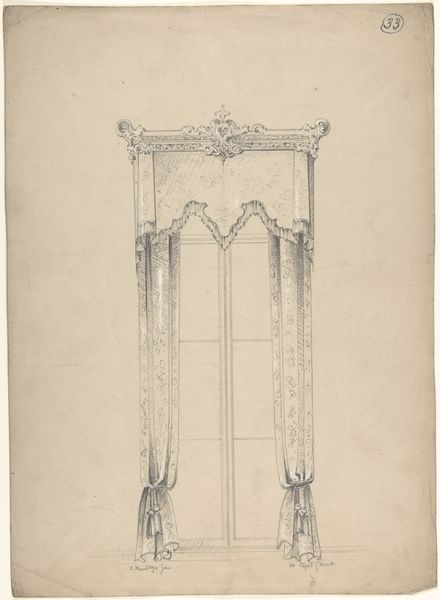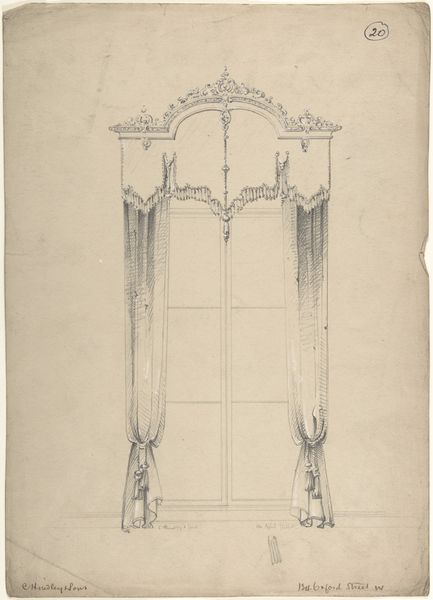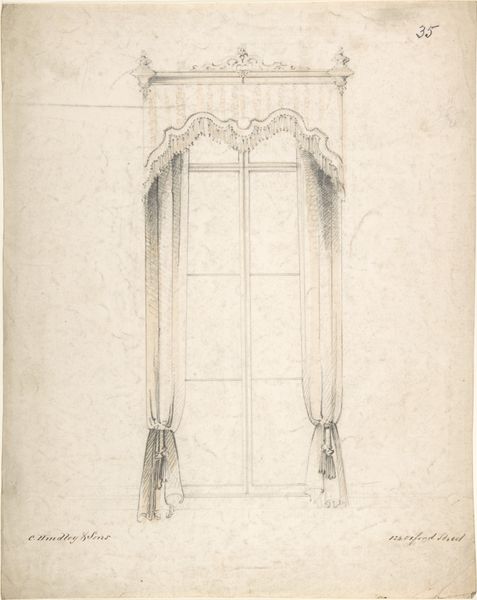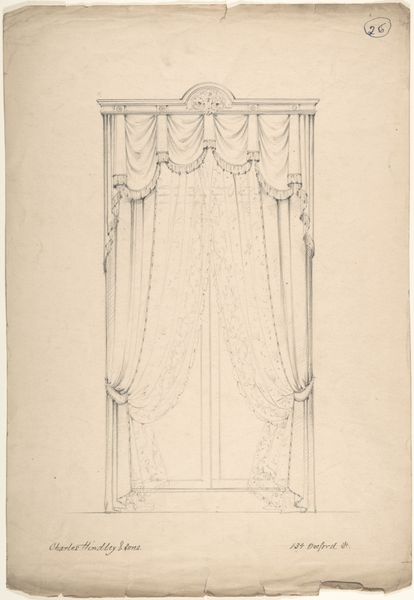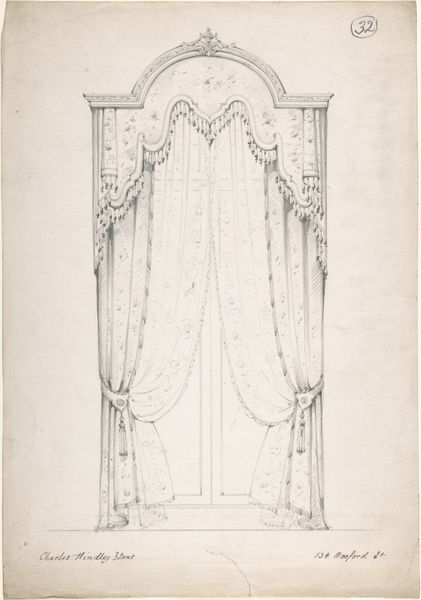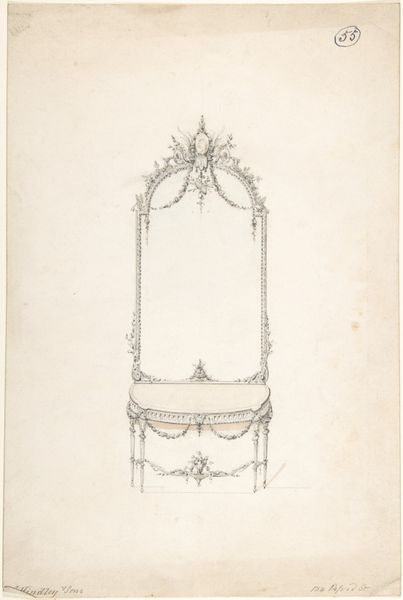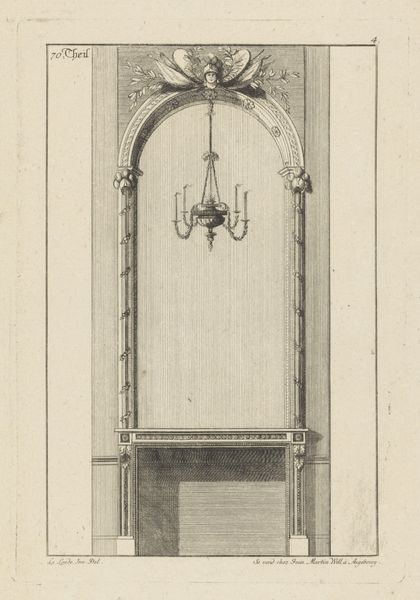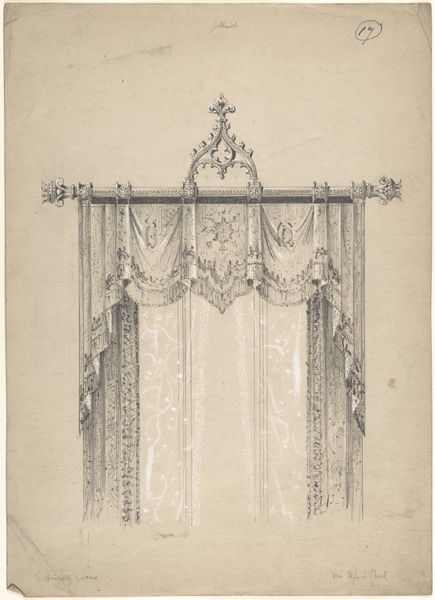
drawing, print, paper, pencil
#
drawing
#
light pencil work
# print
#
paper
#
form
#
pencil
#
line
#
decorative-art
#
watercolor
Dimensions: sheet: 12 13/16 x 9 1/4 in. (32.5 x 23.5 cm)
Copyright: Public Domain
Curator: This delicate drawing, entitled "Design for Curtains," comes to us from Charles Hindley and Sons. It seems to have been created sometime between 1841 and 1900. Editor: Ah, yes, quite airy, isn't it? A whispered promise of opulence. The gentle watercolor washes and meticulous pencil lines evoke a sense of poised domesticity. What do we know about Hindley and Sons? Curator: They were, I suppose, a leading firm of decorators and cabinet makers in 19th century London. Editor: I see in this piece an interesting tension. The almost architectural rendering of the window, coupled with the luxurious, draping fabric… it speaks to a time when even the most intimate spaces were sites of careful social performance. Consider the gaze it frames--who looks in, who looks out, and who is privileged to see such beauty? Curator: It does suggest a certain social stratification, doesn’t it? These are not the curtains of the working class. What strikes me is how even a design on paper carries a weight of expectation, the unseen client, perhaps flipping through sketches like this. Did this ever make it off the page, I wonder? Editor: Indeed! The ghostly presence of a grand interior, conjured up. It makes me think about the labor involved—the unseen hands that would have crafted those tassels, the complex weaving… a silent symphony of exploited skill, for whom these windows and their view would have remained cruelly inaccessible. Curator: A somewhat melancholy thought! Although, as a creative gesture, I love the confidence of those repeating scallops. It is what it needs to be to perform. It sets up a language and communicates it well, so the manufacturer gets it and someone in a well-lit drawing room feels able to say, "yes, that is just the thing for my parlor." Editor: The design’s elegant linearity certainly speaks to the aspirational values of the period. In a way, this innocuous drawing acts as a portal into the intricate hierarchies and desires of Victorian society. Curator: It is lovely to think, now that you mention it, that it takes just a delicate wash and the graphite for all these questions about design, privilege, and unseen labors to rise to the surface and start to mean so much more.
Comments
No comments
Be the first to comment and join the conversation on the ultimate creative platform.
